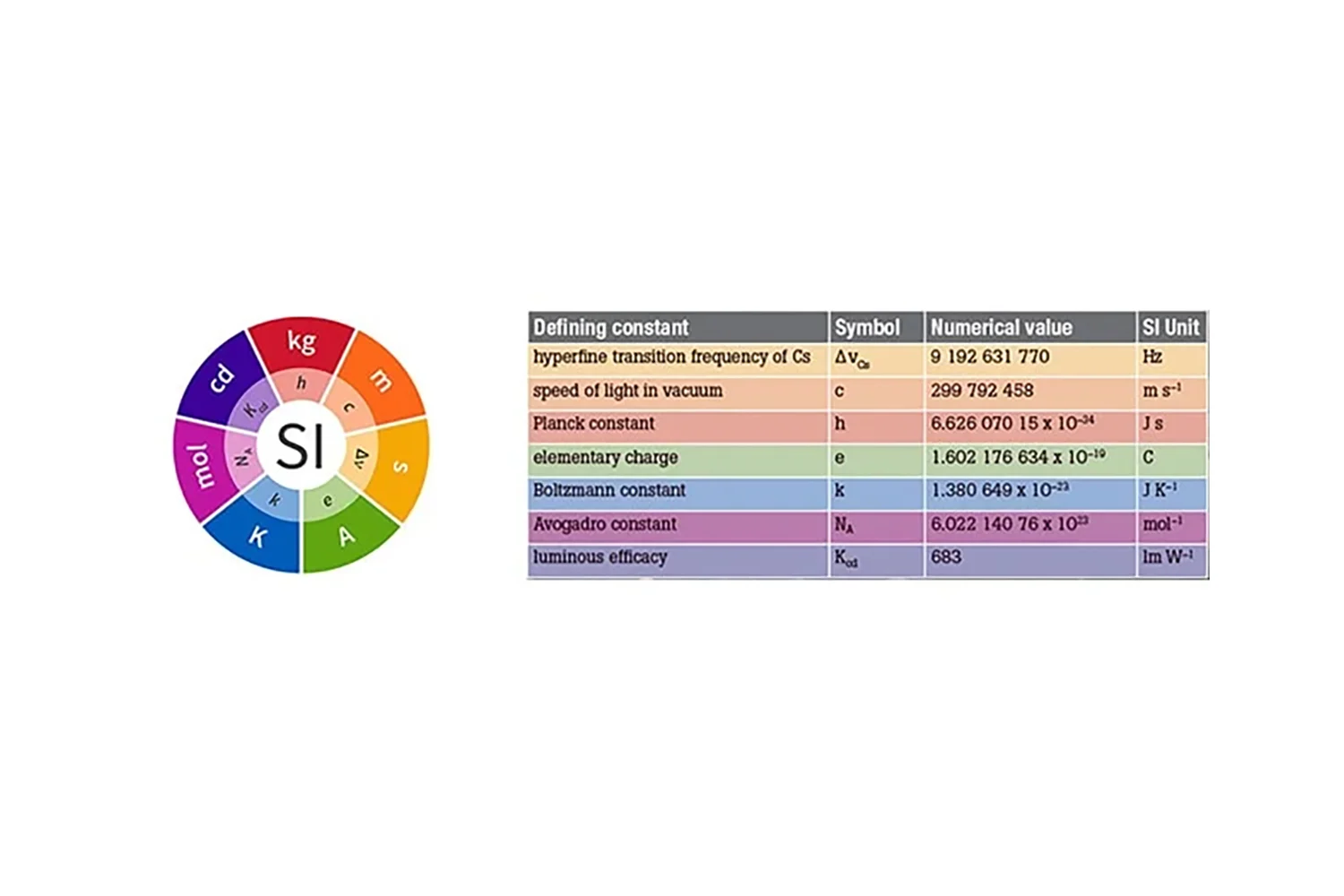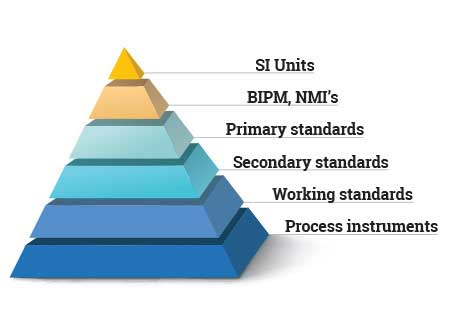International System of Units (SI) – The Top Level of Known Measurement Standards
How do we arrive at measurement standards of known values against which we calibrate our devices under test? For the answer, we turn to the International System of Units, abbreviated “SI”, which is derived from “Le Système International d'Unités” in French. The SI consists of seven base units which are the second, meter, kilogram, ampere, kelvin, mole and candela.
The seven base SI units are derived from quantities in nature that do not change, such as the speed of light.

Until 2019, the kilogram was the exception where it was defined by a cylindrical, metallic alloy artifact known as the International Prototype of the Kilogram (IPK) or “Le Grand K”. Keeping that artifact from influences that might even slightly change it was so important that it was carefully and securely stored under double glass enclosure in a vault in Paris that required 3 keys to open. Despite best efforts to maintain the artifact, it was found that, over time, it lost some mass - equivalent to about a grain of sand. And, so with great fanfare, it was announced on World Metrology Day in 2019 that the definition of the kilogram would shift from being based on the metal artifact in Paris to being based on the Planck Constant, a constant of nature which does not change and can be accessed anywhere in the universe. Learn more about the new definition of the kilogram.
It is interesting to note that the definition of some SI units has improved over time. For example, consider the historical changes to the definition of one second:
1874 - 1956: 1/(86,400) of a day
1956 - 1967: The fraction 1/(31,556,925.9747) of the tropical (epoch) year of 1900 based on astronomical observations between 1750 and 1892
1967 - 1997: the duration of 9,192,631,770 periods of the radiation corresponding to the two hyperfine levels of Cesium (Cs) 133
1997 - 1999: added at rest approaching 0 K
1999 - Present: included corrections for ambient radiation
Using the latest definition, the second is realized by the weighted average of atomic clocks all around the world.
At this point, it should be pointed out that the base SI units can be combined per algebraic relations to form derivative units of measure important in calibration such as pressure (Pounds per Square Inch or PSI). In this case, pressure is derived from the meter and kilogram base SI units.
The SI was created by resolution of the General Conference on Weights and Measures (CGPM), an intergovernmental organization created via the Treaty of the Meter, or Convention of the Metre, signed in 1875 in Paris. The Treaty of the Meter also created organizations to help the CGPM, namely the International Committee for Weights and Measures (CIPM), which discusses, examines and compiles reports on the SI for review by the CGPM and the BIPM whose mission we mentioned above. You can find and review CGPM resolutions at the BIPM website. Today member states of the CGPM include all major industrialized countries.
Calibration Interoperability
A key benefit of having the BIPM manage the SI on a worldwide basis is calibration interoperability. This means that all around the world, we are using the same measurement system and definitions. This allows someone in the U.S. to purchase a 1-ohm resistor in Australia and be confident that it will be 1 ohm as measured by U.S. Standards, and vice versa. In order to have interoperability, we need to have all of our measurements traceable to the same definition.
The Calibration Traceability Pyramid – Getting the SI into Industry
Now that we have the SI reference standards, how do we efficiently and economically share them with the world?

Think of the SI at the top of a calibration pyramid where the BIPM helps pass the SI down to all levels of use within countries for the fostering of scientific discovery and innovation as well as industrial manufacturing and international trade.
Just below the SI level, the BIPM works directly with the National Metrology Institutes (NMIs) of member states or countries to facilitate the promotion of the SI within those countries.
The NMI of the United States is the National Institute of Standards and Technology (NIST), a non-regulated federal agency of the United States Department of Commerce.

















